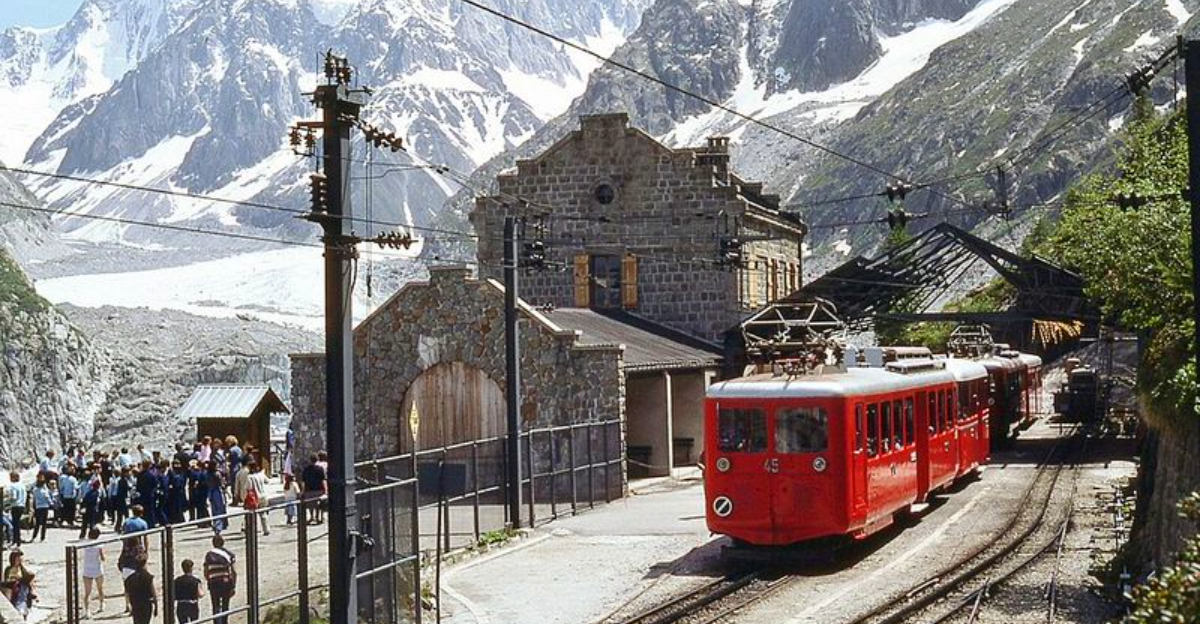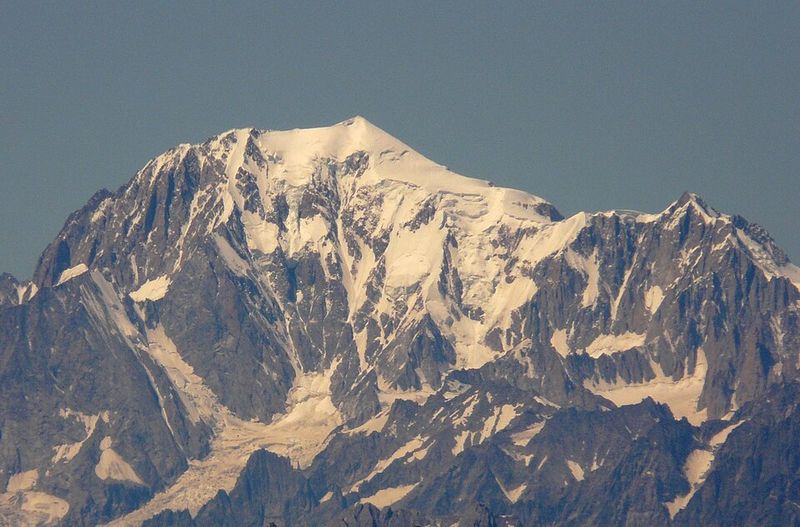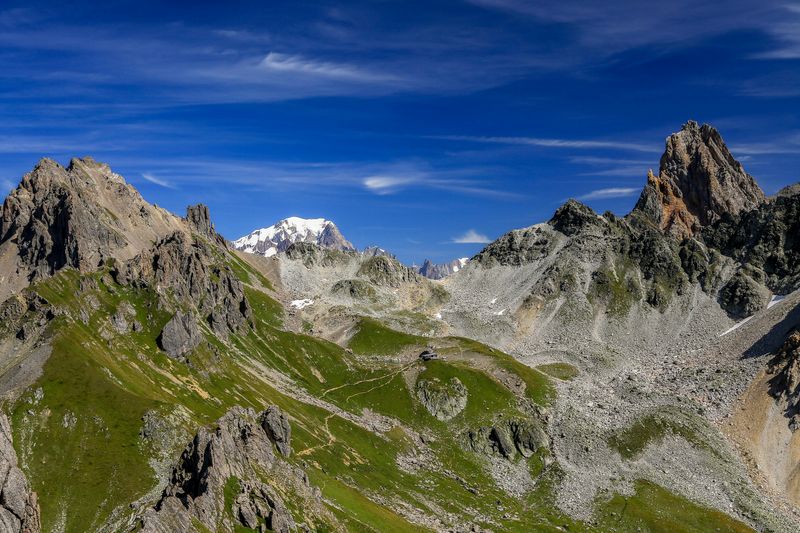Mont Blanc is more than a postcard peak; it is a living, breathing giant that rewards preparation and curiosity. Whether you crave cable car thrills, glacier vistas, or long-distance trekking glory, the massif delivers experiences at every level. Yet weather, altitude, and logistics can upend plans in minutes. Read on for 15 essential insights that will help you plan smarter, see more, and stay safe.
1. Mont Blanc Is the Highest Mountain in Western Europe
Mont Blanc towers above Western Europe at around 4,807 meters and commands instant respect. Its summit catches the first light, revealing a labyrinth of ridges, buttresses, and glaciers that shape the Alps’ weather and identity. Visitors feel its pull from valleys miles away, where its white dome anchors every view. This mountain attracts climbers, hikers, and sightseers seeking awe rather than mere altitude. Even if you never touch a rope, the scale and serenity are unforgettable. Remember, the massif is vast, with countless viewpoints and approaches. Allow time to explore beyond the headline peak and discover quieter, equally stirring corners.
2. Chamonix Is the Main Gateway to Mont Blanc
Chamonix is the heartbeat of Mont Blanc adventures, offering a seamless blend of access and atmosphere. From the town center, you can reach cable cars, cog railways, trailheads, mountain guides, and gear shops within minutes. Accommodations range from boutique hotels to simple hostels, all buzzing with alpine energy. The streets hum with languages, maps, and espresso-fueled plans. Planning is easy because information centers and guide offices streamline logistics. In high season, book rooms well ahead. Even non-hikers find plenty to enjoy, including riverside promenades, museums, and world-class dining. Chamonix makes big mountains feel approachable without sacrificing their mystique.
3. The Aiguille du Midi Cable Car Takes You Close to the Summit
The Aiguille du Midi cable car is a fast track to rarefied views, climbing from Chamonix to over 12,600 feet in about twenty minutes. You step into a world of ice-plastered ridges and chasms that most only glimpse in photographs. Observation platforms and walkways reveal dizzying vistas across the French, Italian, and Swiss Alps. Dress warmly because windchill bites even in summer. Arrive early to beat queues and morning crowds. Sensitive travelers may feel lightheaded at altitude, so move slowly and hydrate. Clear days are sublime, but clouds can erase everything quickly. Check webcams and forecasts before committing.
4. Weather Changes Extremely Fast
Mont Blanc’s weather flips like a switch. Sunshine can vanish into fog, snow, or gale-force gusts before you finish a sandwich. This volatility stems from complex terrain that funnels and traps air masses, creating microclimates across short distances. Always study the latest forecast and set turnaround times. Pack layers, including a waterproof shell, warm midlayer, gloves, and hat even in July. Keep electronics and maps protected from moisture. If visibility collapses, do not push deeper into unfamiliar terrain. Locals check multiple sources rather than one app. Your best plan balances ambition with conservative decision-making.
5. Summer Is the Best Season for Scenic Visits
Late June to early September is prime time for accessible views and open infrastructure. Lifts, trains, and huts operate on fuller schedules, trails shed snow, and daylight stretches long. Wildflowers paint meadows beneath glittering glaciers, and mornings often offer the clearest visibility. Crowds grow by midday, so start early for serenity. Carry sun protection because high-altitude UV is intense. Afternoon storms do appear, reinforcing the need for layers and quick decision-making. Shoulder weeks can be ideal, balancing access and fewer people. If you prioritize vistas, photography, and moderate hikes, summer delivers the fullest Mont Blanc experience with minimal technical hurdles.
6. Winter Turns the Area Into a Ski Capital
Winter reimagines the Mont Blanc massif as a playground for advanced skiers and riders. Chamonix’s steep terrain, off-piste routes, and famous descents attract experts from around the world. Guided skiing is common due to crevasses, avalanches, and complex navigation. Avalanche gear and knowledge are essential beyond groomed pistes. Weather windows matter hugely for snow stability and visibility. Non-skiers can still enjoy magical town lights, cozy cafes, and frozen vistas from lifts and trains. Book accommodations early in peak weeks. Respect closures and advisory signs, and consider lessons or guides to unlock terrain safely without learning the hard way.
7. The Tour du Mont Blanc Is One of the World’s Top Long-Distance Hikes
The Tour du Mont Blanc spans roughly 170 kilometers through France, Italy, and Switzerland, circling the massif with constant drama. It blends charming villages, high passes, buttery meadows, and glacier views into a classic itinerary. Most hikers take 8 to 11 days, staying in refuges or inns. Logistics are straightforward but require booking ahead in summer. Fitness matters because daily elevation gain adds up. Weather shifts can test gear and resolve, so pack layers and good waterproofs. Navigation is clear with signs and GPX tracks. The TMB earns its legendary status by balancing challenge, culture, and nonstop horizons.
8. Mountain Huts Require Advance Booking
Refuges along Mont Blanc routes, especially the Tour du Mont Blanc, book out months in advance. These mountain huts offer hearty meals, bunks, and camaraderie at key points between passes. Booking ahead guarantees shelter and simplifies daily distances. Bring a lightweight sleeping liner, earplugs, and cash for incidentals. Arrive on time to avoid losing your spot. Dietary needs should be communicated early, and flexibility helps. Shared spaces mean good hut etiquette matters: quiet hours, tidy gear, and respect for staff. If you missed reservations, consider alternative stages or valley accommodations linked by transport. Planning reduces stress and maximizes adventure.
9. Altitude Affects Many Visitors
Even mid-altitude lookouts can leave newcomers winded or headachy. The rapid ascent via cable cars gives little time to adapt, so move slowly, drink water, and avoid heavy exertion early. Mild symptoms include fatigue, dizziness, or nausea. If symptoms worsen, descend rather than push on. Caffeine and alcohol can complicate hydration, so pace those. Consider spending a day or two at moderate altitude before bigger excursions. Sun and cold amplify stress on the body, making proper clothing vital. Everyone responds differently, so listen to your signals and prioritize safety over tight schedules or bucket-list pressure.
10. The Mer de Glace Glacier Is Accessible by Train
The historic Montenvers Railway climbs from Chamonix to the Mer de Glace, France’s largest glacier. The journey delivers classic views of ice flows, crevasses, and jagged granite. At the top, platforms, exhibits, and seasonal ice caves reveal the glacier’s beauty and retreat. Stairs can be demanding due to the glacier’s lowering surface. Go early for quieter scenes and better light. Weather can close access, so verify operations. Interpretive displays help visitors understand climate change impacts. This is one of the region’s most popular outings and a family-friendly way to encounter a glacier without technical travel or long hiking.
11. Proper Footwear Is Essential
Even casual Mont Blanc trails can turn rocky, slick, or steep without warning. Supportive hiking boots or robust trail shoes protect ankles, improve traction, and reduce fatigue. Combine them with moisture-wicking socks to prevent blisters. Break footwear in before your trip and carry blister care. Weather can make paths muddy or icy, so tread matters. Lightweight trekking poles add stability, especially on descents. For glacier or snow travel, specialized equipment and training are mandatory. City sneakers are a gamble you will likely regret. Good footwear is the simplest upgrade that transforms safety and comfort throughout your alpine days.
12. Photography Opportunities Are Exceptional
Mont Blanc rewards patient photographers with changing light, texture, and scale. Dawn often brings the clearest skies, with alpenglow igniting the snow dome and serrated ridges. Seek reflections in small lakes and angle for layered compositions across valleys. A polarizer tames glare and deepens skies, while ND filters enable silky clouds or water. Keep batteries warm in cold air. Scout locations the day before to align sunrise timing. Respect barriers and never step onto glacier zones unprepared. Weather can erase views quickly, so work fast when conditions align. The massif makes every frame feel larger than life.
13. Guided Climbs Are Mandatory for Beginners
Summiting Mont Blanc demands glacier travel, crevasse awareness, and swift decision-making. Beginners should hire a certified guide who provides instruction, pacing, and crucial judgment in volatile weather. Training routes and acclimatization climbs precede summit attempts. Proper gear includes crampons, ice axe, helmet, harness, and layers. Fitness is essential because summit days are long and taxing. Schedules shift with forecasts, and turning back is sometimes the wisest call. Book guiding services well in advance during peak season. Respect that this is serious mountaineering, not a scenic stroll. The right guide turns ambition into a safer, more informed experience.
14. Wildlife Sightings Are Common
Patience pays on Mont Blanc’s trails, where ibex, chamois, and marmots enliven the landscape. Dawn and dusk are prime viewing windows, when animals forage and human traffic thins. Keep distance, use quiet voices, and never feed wildlife. A modest zoom lens captures portraits without intrusion. Binoculars help spot movement across scree or meadows. Stay on marked paths to protect habitats. Weather can influence activity, with cooler mornings often busier. Teach kids to observe respectfully, turning sightings into highlights rather than chases. These encounters connect your journey to the living alpine ecosystem that thrives beneath the snowbound summits.
15. Local Food Is a Big Part of the Experience
Alpine cuisine fuels big days and warms cold evenings. Tartiflette layers potatoes, reblochon, bacon, and onions into bubbling comfort, while fondue and raclette turn dining into a communal ritual. Mountain refuges and village restaurants serve hearty plates that pair beautifully with Savoy wines. Book popular spots during peak weeks. After long hikes, a shared pot of cheese restores spirits faster than any energy bar. Vegetarian options are growing, but check menus in advance. Save room for blueberry tarts. Food here is not an afterthought; it is culture on a plate, tying landscapes to tradition one delicious bite at a time.



















